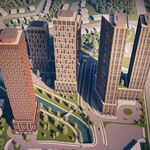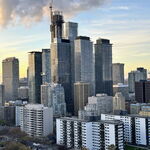Sunnyside
Senior Member
I think you have hit the vision on the nose. Only a proper heavy rail service of some form would be able to not just match the efficacy of buses, but exceed it. LRT would never have been able to do either. Not to mention, ridership is trending towards the exact trips this is being planned for; GO buses cannot do it alone forever. The REM is also an apt comparison because we are theoretically integrating two schemes (DRL/407 Busway -> OL+407 'IRT'), which when unified becomes more realistic in scope.I think if Light Metro is used for 407 Transitway, it could be built to REM specs, something inbetween a subway and regional train, and be part of GO's branding if they wanted. With fare integration coming, I don't think it matters so much from a user standpoint. You could have both GO and local transit buses stopping at stations and have people transfer to the Light Metro.
This is a shot in the dark, but does anyone have an idea of how much it would cost to build segments of the Transitway? And perhaps how long it would take? Either the bus or rail option would be fine, but the latter likely has no substance to investigate. I'm wondering if this is more bang for our buck than some projects that are currently planned/shelved for the 2031-2041 period. I think I would take the core (rail) Transitway from MCC to Markham at the expense of the Milton Line upgrades, for instance (especially seeing as both bring rail service to MCC in some capacity).





